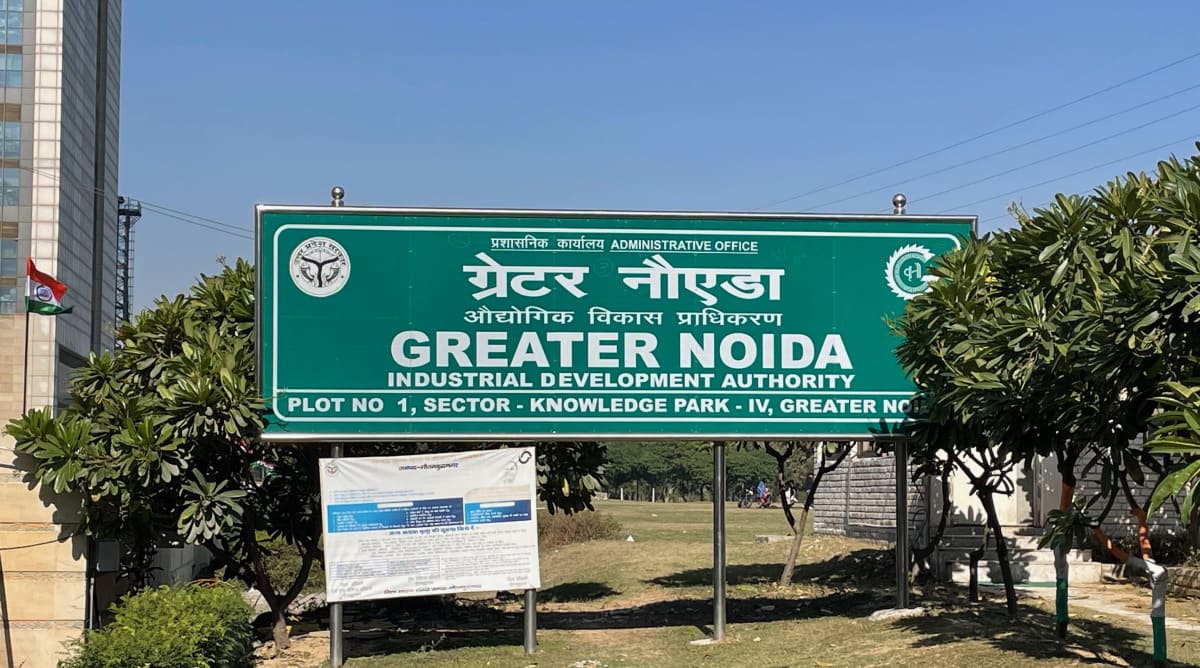Greater Noida is a modern city near Delhi, India. It is known for its planned design and green spaces. The city is part of the National Capital Region (NCR) and has become a hub for businesses, students, and families.
Greater Noida was built to reduce the pressure on Delhi. It offers wide roads, modern homes, and excellent facilities. Many companies and schools have set up here, making it a popular place to live and work.
The city was planned with the future in mind. It has clean neighborhoods, parks, and good public transport. Wide roads and an expressway make it easy to travel in and out of the city. Greater Noida also focuses on using technology to improve life for its people.
Greater Noida is a place where you can find schools, offices, shopping malls, and lots of fun activities. It is becoming one of the best places to live in India.
Did you know Greater Noida will soon have an international airport? It will connect the city to the world and bring new opportunities!
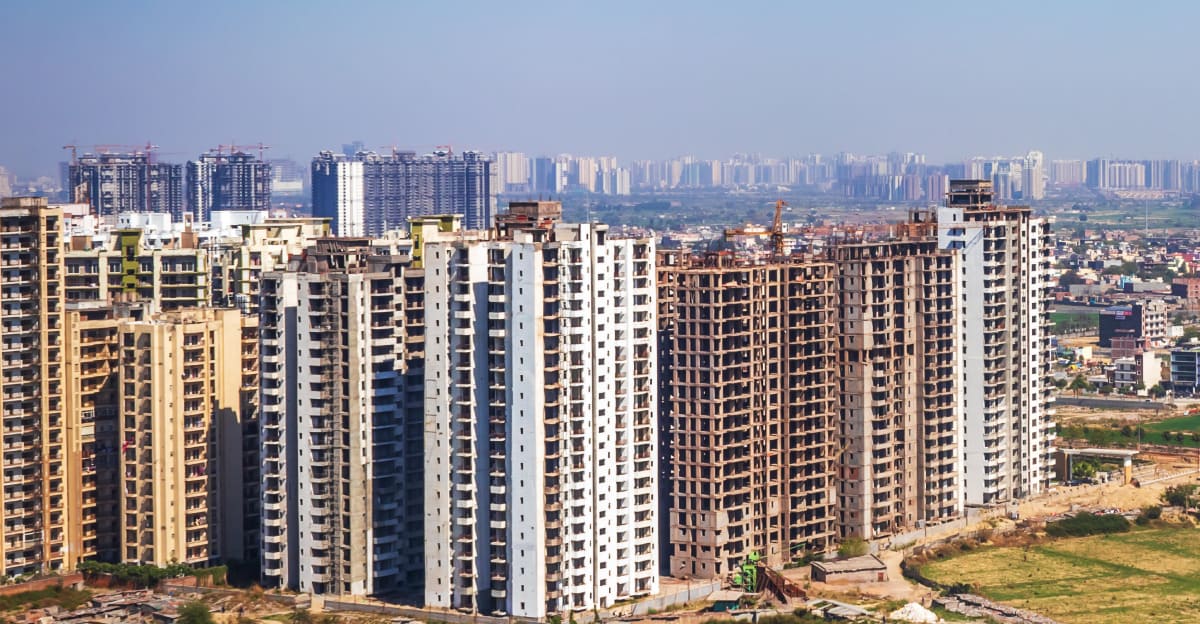
History of Greater Noida
Greater Noida is a planned city in the Gautam Buddha Nagar district of Uttar Pradesh, India. It was created in 1991 under the UP Industrial Area Development Act. It is part of the National Capital Region (NCR) and is an extension of Noida, a nearby city.
In the 1980s, Delhi was growing too fast. The government realized this could cause problems, so they decided to build new cities around Delhi to make things better.
Noida was one of these cities, but by the 1990s, it became overcrowded. The government decided to build Greater Noida, just 25 kilometers from Noida. It was made with better planning and more space for people to live and work.
Greater Noida was planned to be a world-class city. The city covers about 38,000 hectares (380 square kilometers) and is managed by the Greater Noida Industrial Development Authority (GNIDA).
In the early 2000s, the government planned Greater Noida West, also called Noida Extension. It was made to offer affordable homes. Many families moved here because the prices were lower.
The area grew quickly with many new houses. Good roads and easy access to Noida helped. It became a popular place for new residents.
The roads are wide, and all utilities like water and electricity are underground. The city’s areas are named after Greek letters, like Alpha, Beta, Gamma, and newer areas like Xi, Delta, and Mu.
Events and Growth
- The Yamuna Expressway connects Greater Noida to Agra, improving travel to the city.
- Buddh International Circuit, located in Greater Noida, hosted the Formula One Indian Grand Prix from 2011 to 2013.
- The Auto Expo has been held at the India Expo Mart in Greater Noida, attracting car lovers and professionals.
Greater Noida is also home to historic sites, including the village of Rampur Jagir, where revolutionary leader Ram Prasad Bismil lived. A park named after him, the Amar Shaheed Pt. Ram Prasad Bismil Udyan, honors his legacy.
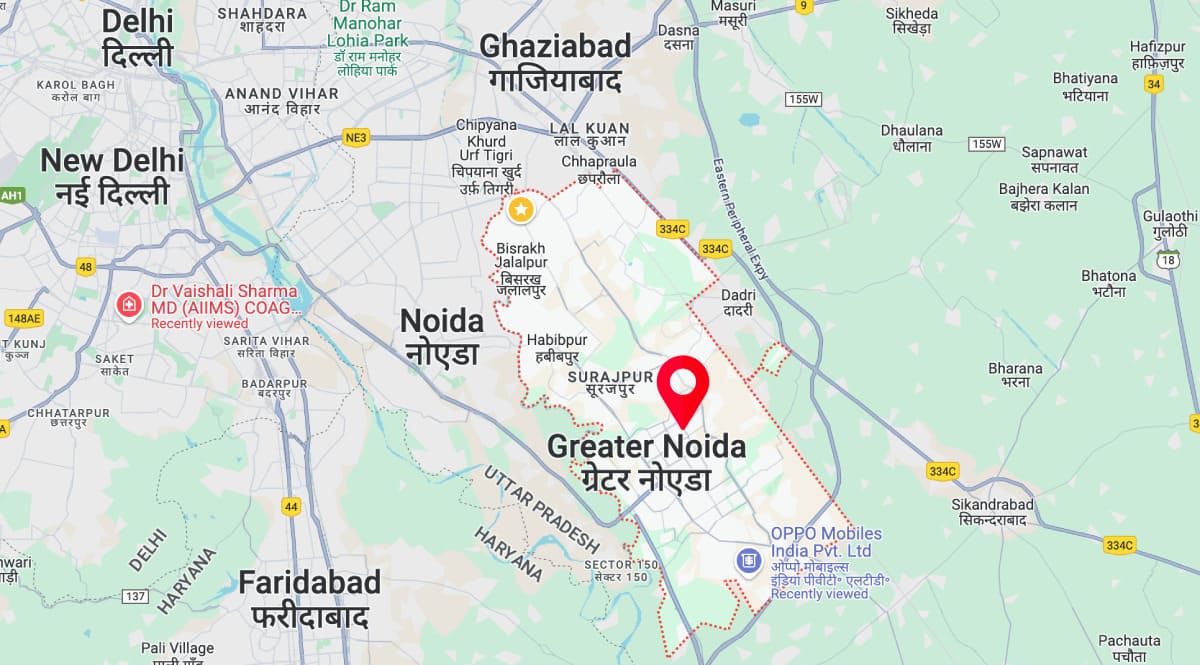
Where is Greater Noida Located?
Greater Noida is located in the Gautam Buddha Nagar district of Uttar Pradesh, in the northern part of India. It is about 40 kilometers southeast of Delhi, making it easily accessible from the national capital.
Neighboring Cities and Areas
Greater Noida is surrounded by several important areas:
- To the north and northwest, it borders Delhi.
- To the northeast, it is close to Ghaziabad.
- To the west and southwest, it is bounded by the Yamuna River.
- To the northeast, east, and southeast, it is bordered by the Hindon River.
The location and connectivity of Greater Noida make it a key city in the National Capital Region (NCR), offering easy access to Delhi and other nearby cities.
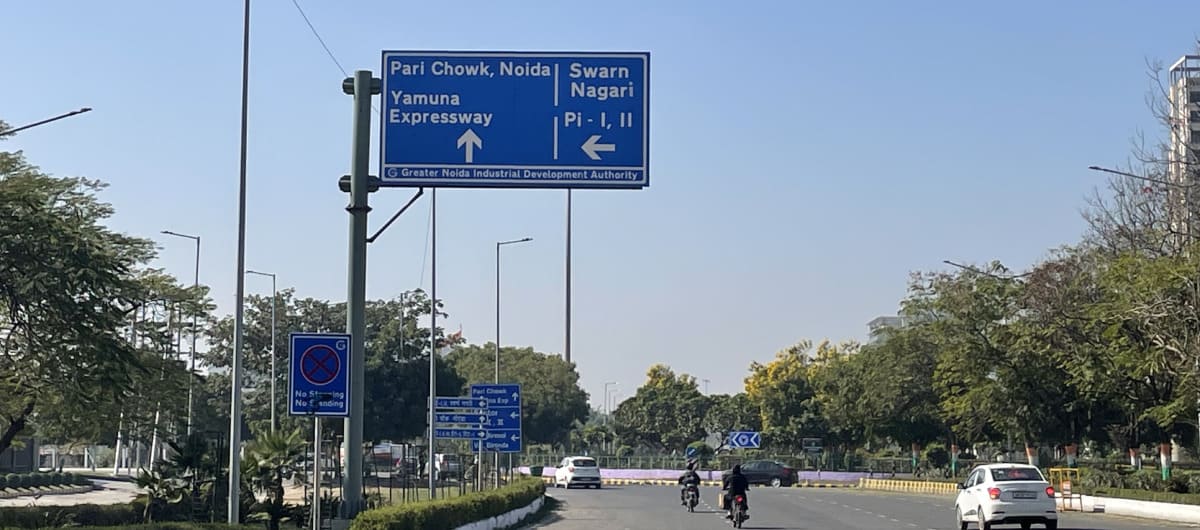
Which area comes under Greater Noida and Noida Extension?
Greater Noida and Noida Extension are located in Gautam Buddha Nagar, Uttar Pradesh. These regions include sectors, famous landmarks like Pari Chowk, Gaur Chowk, and several villages.
Areas Under Greater Noida
Greater Noida is a big, planned city with many sectors and villages. Pari Chowk is a famous landmark at the entrance of Greater Noida. Below are the main areas that come under Greater Noida:
- Sector Alpha I, Alpha II
- Sector Beta I, Beta II
- Sector Gamma I, Gamma II
- Sector Delta I, Delta II
- Sector Zeta
- Sector Mu
- Sector Omicron I, Omicron II
- Sector Xi
- Sector Omega
- Tech Zone I & II
- Knowledge Park I & II
- ECOTECH I & III
Greater Noida has 124 villages, including Tilpta, Kailashpur, Rupvas, Amka, Dankaur, Surajpur, Kasna, Luksar, Rampur, Dadha, Sadullapur, Khangoda, and many more.
Areas Under Noida Extension (Greater Noida West)
Noida Extension, also called Greater Noida West, is growing fast. Gaur Chowk is the main gateway to this area. Ek Murti, a well-known statue, is another popular landmark. Below are the main areas under Noida Extension:
- Sector 1
- Sector 2
- Sector 3
- Sector 4
- Sector 5
- Sector 6
- Sector 16B
- Sector 16C
- Sector 12
- Sector 18
- Sector 19
- Tech Zone IV
- Knowledge Park IV
- Knowledge Park V
Also Greater Noida West consists of 16 villages: Khairpur Gurjar, Shahberi, Devla, Patwari, Ghanghola, Bisrakh, Roza-Yakubpur, Haibatpur, Itaida, Patwari, Aminabad, Asadallapur, Maincha, and Chipyana Buzurg.
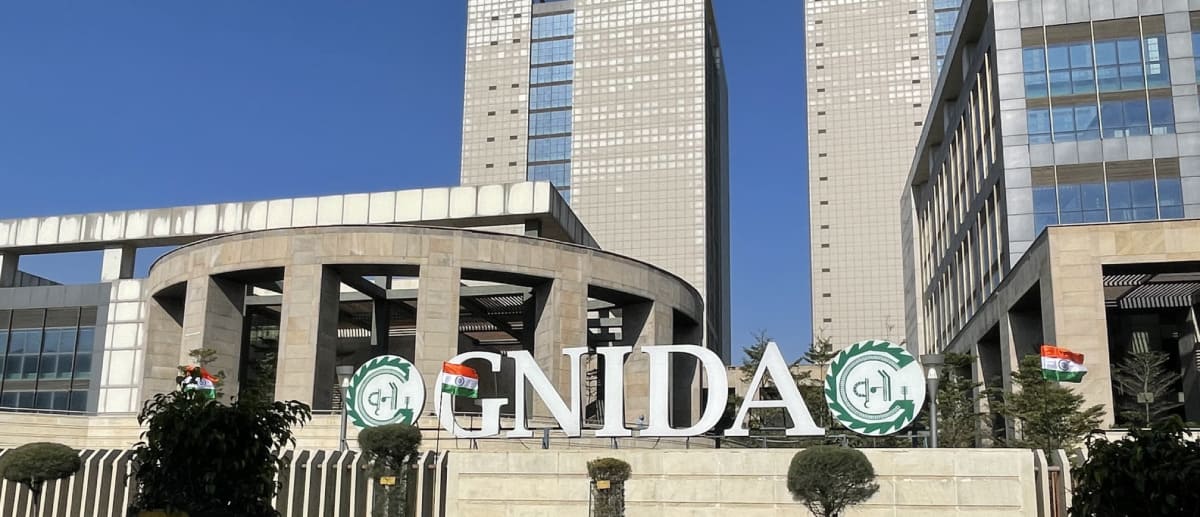
Who Manages Greater Noida?
Greater Noida is managed by the Greater Noida Industrial Development Authority (GNIDA). This authority plans and looks after the city. GNIDA was set up in 1991 under the UP Industrial Area Development Act of 1976. It works to provide a clean city, wide roads, and better infrastructure.
GNIDA works under the Infrastructure and Industrial Development Department of the Uttar Pradesh Government. It oversees planning, development, regulation, and daily operations. The Chairman, an IAS officer, heads the authority, while the CEO, also an IAS officer, manages daily tasks.
Greater Noida, along with Noida, is part of the Gautam Buddha Nagar district. This district is in the Meerut Division, with its headquarters located in Greater Noida.
The administration ensures law and order, public services, and basic infrastructure like healthcare and education. Together with GNIDA, it helps in the city’s overall growth and management.
Greater Noida is being developed as a Metro Centre to attract businesses and reduce pressure on Delhi. The city’s master plan includes wide roads, green spaces, and underground utilities. GNIDA aims to create a high-quality urban environment for living, working, and recreation.
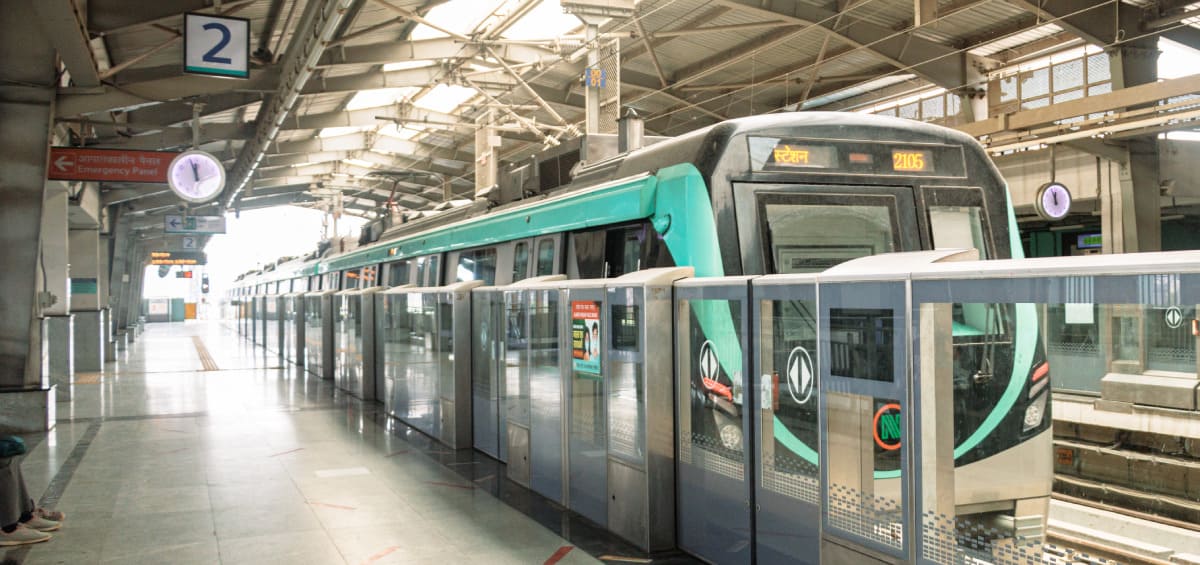
What Are the Transport Options in Greater Noida?
Greater Noida has many ways to travel. You can use metro trains, buses, cabs, autos, and well-connected roads. These options make travel simple and convenient for everyone.
Metro in Greater Noida
The Aqua Line Metro connects Greater Noida to Noida. It starts at Sector 51 in Noida and ends at Depot Station in Greater Noida. Important stops include Pari Chowk, Knowledge Park II, and Alpha 1.
The Aqua Line is fast, clean, and easy to use. It also connects with Delhi’s metro system, helping you travel further with ease.
Buses in Greater Noida
Buses are a budget-friendly option to move around the city. They run on fixed routes and connect Greater Noida to Noida, Delhi, and Ghaziabad.
Popular bus routes include:
- Noida City Centre to Pari Chowk (a busy route).
- Yamuna Expressway buses connecting to Mathura and Agra.
Local buses also operate within the city. They connect different sectors and nearby villages, making travel affordable for everyone.
Cabs and Autos
Cabs like Ola and Uber are widely available. You can book them easily through apps on your phone. For shorter trips, autos and e-rickshaws are a good choice. You’ll often find them near metro stations, markets, and residential areas.
Major Routes in Greater Noida
Greater Noida has excellent roads for smooth travel. Key routes include:
- Noida-Greater Noida Expressway: Connects Greater Noida to Noida and Delhi.
- Yamuna Expressway: Links Greater Noida to Agra and Mathura.
- Pari Chowk to Knowledge Park II: Connects important residential and education hubs.
- Surajpur-Kasna Road: Links industrial areas like Ecotech to homes and markets.
- Greater Noida West Roads: Connect Gaur Chowk to Ek Murti and nearby sectors.
- Local Roads: Connect sectors, villages, and markets within Greater Noida.
Population and Climate of Greater Noida
Greater Noida is home to many people. In 2011, the population was around 107,000, but it has grown significantly since then. Many families and professionals move here for better opportunities.
The current estimated population of Greater Noida Census Town in 2025 is approximately 245,000. The scheduled 2021 Census was postponed due to COVID-19.
Climate of Greater Noida
Greater Noida has a mix of hot summers, rainy monsoons, and cool winters. Here’s what you can expect throughout the year:
- Summers (March to June): Summers are very hot, with temperatures reaching up to 45°C. The weather is dry and sunny.
- Monsoon (July to September): This is the rainy season. The city gets a lot of rain, which cools the air.
- Winters (October to February): Winters are cold and pleasant, with temperatures dropping to 5°C. Fog is common in the early mornings during December and January.
The best time to visit Greater Noida is during winters, from October to February, when the weather is most comfortable.
Facts About Greater Noida
- Greater Noida is called GreNo as a nickname.
- Greater Noida is a planned city in Uttar Pradesh.
- The PIN codes for Greater Noida are 201306, 201310, 201314, 201308, and 201309.
- Greater Noida was established on January 28, 1991 to help manage growth in the area.
- The telephone code for Greater Noida is 0120.
- The vehicle registration number for Greater Noida is UP-16.
- The coordinates for Greater Noida are 28.4095° N, 77.5043° E.
- The literacy rate in Greater Noida is 86.54% according to the 2011 Census.
- Delhi is the nearest big city, about 40 km away.
- Greater Noida is part of the Noida Lok Sabha constituency.
- There is 1 Lok Sabha constituency in Greater Noida, called Noida Constituency.
- Greater Noida covers an area of about 380 km².
